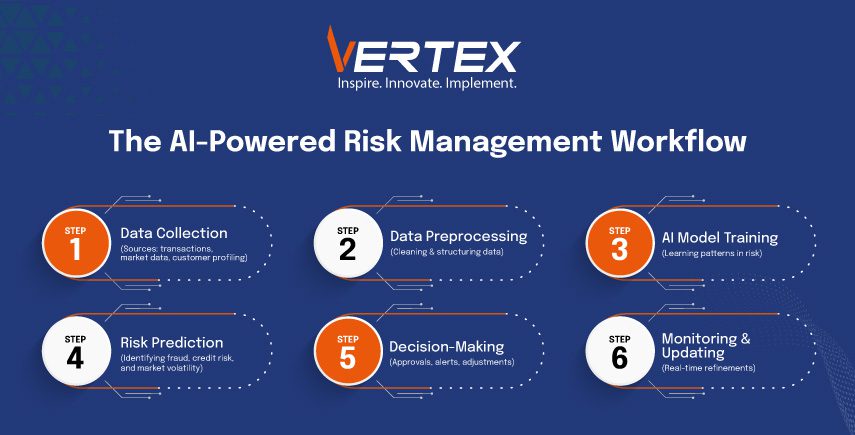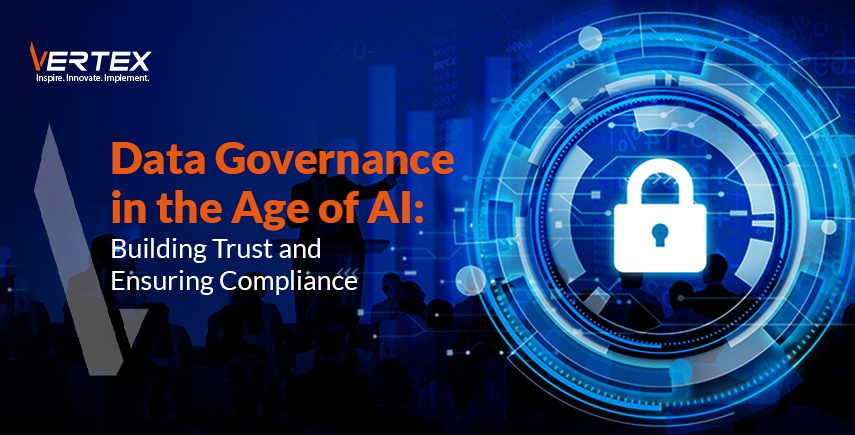
Mani Pattathil
February 24, 2025How Data Engineering and AI are Revolutionising Financial Risk Management
The ever-evolving market environment, together with regulatory changes and increasing cyber risk, is making financial risk management an exceptionally difficult challenge.
Don’t traditional methods work here? Unfortunately, no, they’re falling behind.
Financial risk management receives its transformation from Data Engineering and Artificial Intelligence (AI), which operate as a powerful combination.
These technologies demonstrate their value through substantial changes to modern operations.
AI and Data Engineering combine processing of big data volumes through algorithmic learning, which produces real-time predictive insights for the organization.
Let’s take Visa as an example.
Their five-year technology investment amounts to $10 billion, while AI-related data infrastructure and technology received $3 billion specifically.
AI systems operate in real time to detect fraud, which benefits customers and minimizes operating expenses for the institution.
Therefore, embracing AI isn’t optional—it’s essential.
This blog demonstrates how Data Engineering, along with A, transforms financial risk management processes.
You will get to see actual business achievements accompanied by critical information combined with predictions about what’s to come.
Ready? Let’s dive in.
The Foundation: Data Engineering in Finance
The financial industry functions through its vital data supply.
The native format of raw data appears as unstructured data, existing in separate and extensive units.
Systems development under Data Engineering enables organizations to collect, store, and analyze data.
Financial institutions build advanced data processing pipelines that handle transactional data and market feeds, along with customer interactions and more.
Financial institutions achieve a perfect risk assessment when they handle data properly, as it establishes data quality while ensuring consistency and accessibility.
A properly engineered data system enables collection from diverse sources to create an institution-wide exposure overview.
A complete understanding of information remains essential for discovering weaknesses while making strategic choices.
Through efficient data frameworks, organizations can perform quick, real-time processes, which allow immediate responses to new risks as they develop.

AI’s Role in Transforming Risk Management
Risk management receives an advanced boost through intelligent technology, which applies superior analytical systems that exceed standard statistical approaches.
Advanced AI solutions analyze extensive data collections to discover patterns and spot deviations, which leads to precise forecast predictions.
AI benefits various sectors through its effective contribution to several domains.
1. Credit Risk Assessment
The traditional method of borrower creditworthiness measurement depends on historical financial data, together with credit score assessments.
The analysis of extensive data sources, including transaction records and non-standard payment data, through AI systems generates more precise credit evaluation results.
Through this methodology, institutions can locate responsible borrowers that would normally be missed under traditional assessment methods.
2. Fraud Detection
Financial institutions face important security threats from fraudulent operations.
AI systems deliver superior capabilities to identify abnormal patterns and unusual behaviors that hint at fraudulent transactions.
AI examines transaction data in real time to detect suspicious behaviour, which leads to faster responses alongside reduced numbers of false flags.
The financial industry recorded an extraordinary rise in fraud losses during 2022, surpassing USD 8.8 billion, which represented a 30 percent increase from the previous year, thus establishing the critical demand for AI-powered solutions.
3. Market Risk Analysis
Predicting risks in financial markets becomes complex because multiple factors influence their operation.
AI models excel at understanding complex scenario variable-risk factor relationships to create more accurate predictive forecasts.
AI systems analyze past market data to forecast business downturns, which helps institutions plan their strategies ahead of time.
4. Operational Risk Management
AI utilizes predictive functions to mitigate operational risk components, such as system breakdowns and compliance violations.
Through data analysis, AI identifies upcoming risks within organizational settings, which leads to the prevention of operational disruptions and keeps clients within regulatory standards.

AI-Driven Risk Management Process
The AI-powered risk management process uses the following workflow to convert unprocessed data into useful predictive information, which produces enhanced decision accuracy:
- Data Collection: Financial records, as well as market data and customer profiling activities, make up the data collection process.
- Data Preprocessing: The preprocessing phase verifies and organizes raw data before analysis takes place.
- Risk Model Training: The use of artificial intelligence algorithms, such as deep learning and machine learning, enables risk pattern identification during model training.
- Risk Prediction & Detection: The system performs risk examination and risk alert functions to recognize default risks on credit lines and market volatility, as well as identify fraudulent activities.
- Decision-Making: Decisions are based on gathered information and lead to loan approvals as well as alert generation or portfolio modifications.
- Monitoring & Updating: The process of data monitoring enables AI models to reach better accuracy levels through ongoing updates that use real-time information.
Challenges and Considerations
The integration of Data Engineering and AI into risk management presents several barriers that must be overcome despite considerable advantages.
- Data Quality and Integration: To achieve effective risk management, the integration requires high-quality data and consistent data that originates from various sources. Inaccurate models form when data quality remains poor, thus leading to wrong decisions.
- Model Interpretability: AI tools, including deep learning models, often operate as impenetrable systems, which makes it challenging for users to grasp their decision-making processes. The absence of clear information raises regulatory issues in controlled business sectors.
- Regulatory Compliance: Financial institutions need to maintain regulatory compliance of their AI systems by checking for updates in existing legislative requirements. Any implementation of AI requires organizations to balance transparency needs against regulatory requirements.
- Cybersecurity Risks: AI Systems handling financial data create exploitable targets for computer security intruders since they manage crucial financial information. Botnet attacks require organizations to deploy robust cybersecurity systems to protect their information.
Final Words
Financial risk management is currently experiencing a transformation through Data Engineering and AI approaches.
The implementation of these technologies provides financial institutions with rapid, accurate evaluations to manage complex risks effectively in their credit risk assessment, as well as fraud detection and market analysis processes.
Pushing ahead in financial industry innovation demands organizations to adopt both Data Engineering techniques and Artificial Intelligence solutions.
Financial institutions can protect themselves from possible threats and discover new avenues to grow and strengthen their organizational resilience by implementing these strategies.
Ready to future-proof your financial risk management? Explore advanced AI solutions at VertexCS.
Recent Blogs

19 May, 2025

19 May, 2025

12 May, 2025

5 May, 2025

28 April, 2025

21 April, 2025

14 April, 2025

7 April, 2025
Recent News

2 February, 2025

14 November, 2024

4 November, 2024

1 August, 2024

6 March, 2024

28 February, 2024

12 June, 2023



